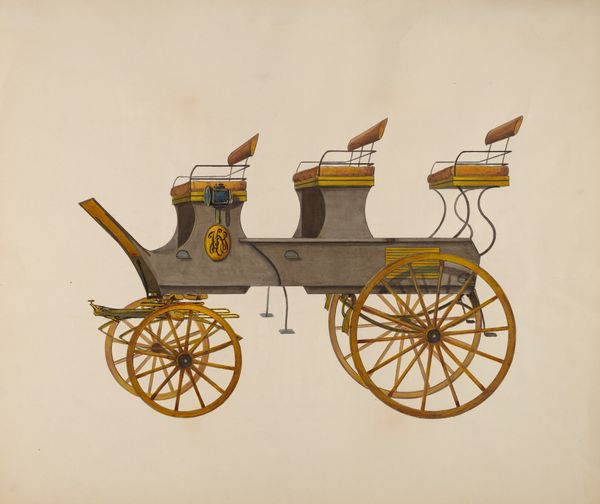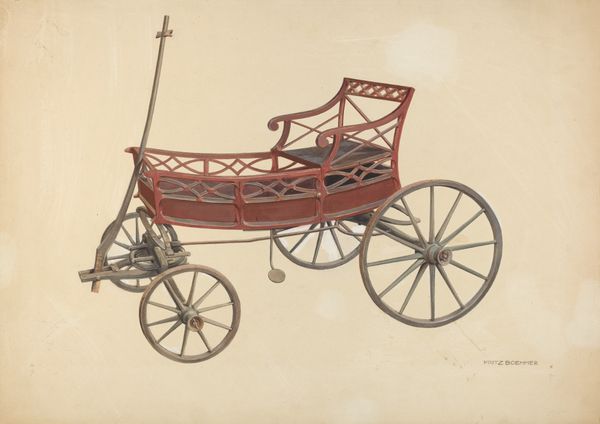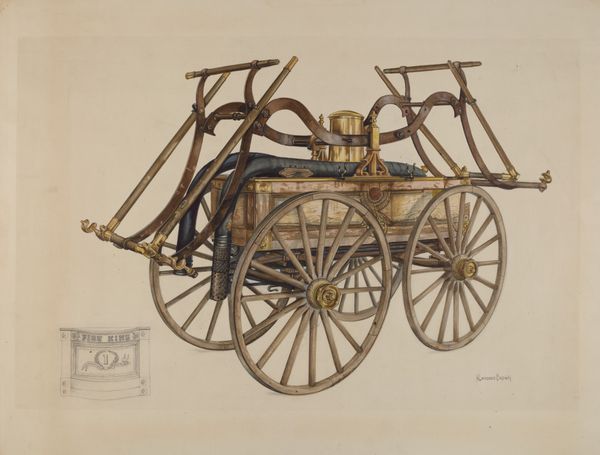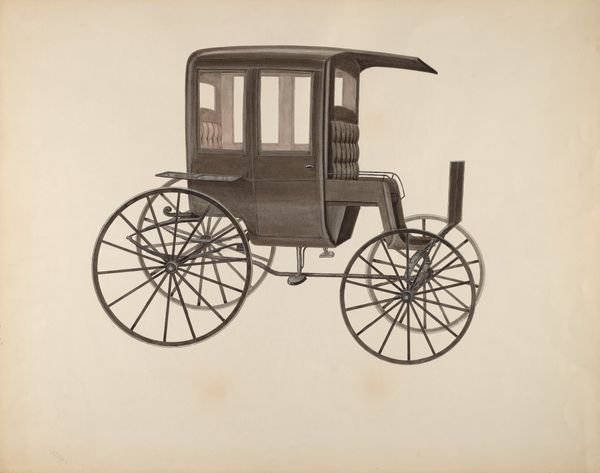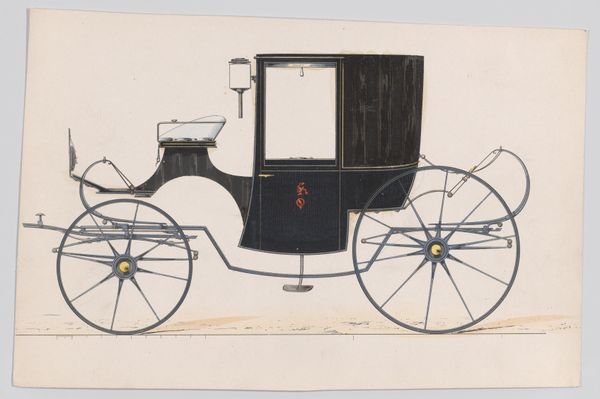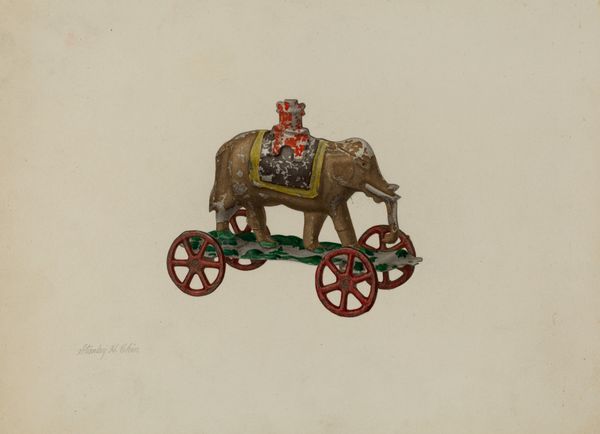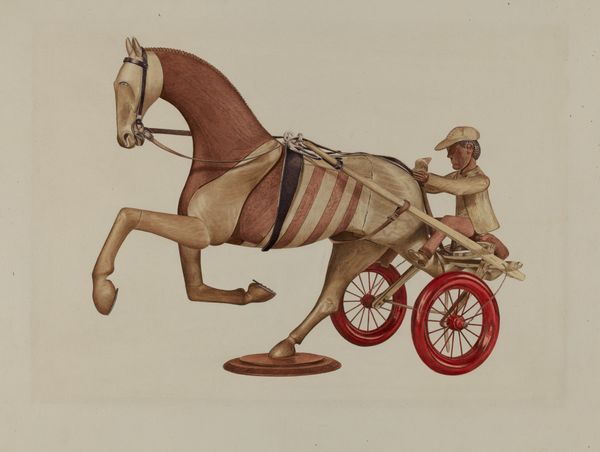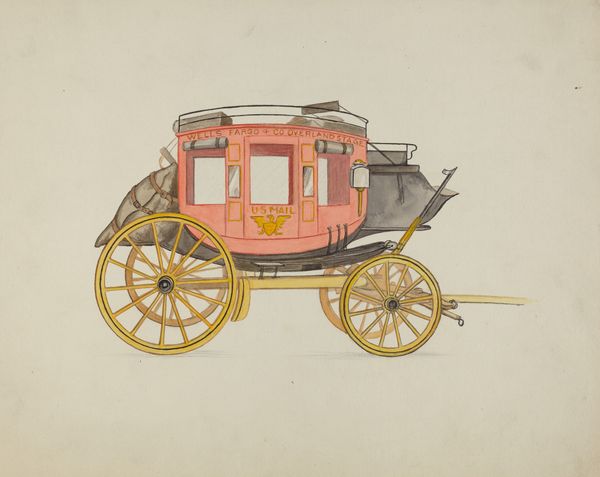
drawing, watercolor
#
drawing
#
landscape
#
watercolor
#
watercolour illustration
#
academic-art
#
watercolor
Dimensions: overall: 49.2 x 60.2 cm (19 3/8 x 23 11/16 in.)
Copyright: National Gallery of Art: CC0 1.0
Editor: Here we have "Brake," a watercolor drawing from around 1936 by Fred Weiss. It's a very technical-looking depiction of a carriage. What immediately strikes me is the focus on precise details rather than any dramatic atmosphere. What catches your eye? Curator: This piece really speaks to the role of art as documentation, particularly within a specific historical and social context. Before photography was widespread and accessible, accurate drawings like this were essential. What do you think this drawing might have been used for? Editor: Perhaps a patent application or some kind of catalog? It feels almost diagrammatic. Curator: Exactly. Now consider the date, around 1936. While cars were becoming more common, carriages still held a place, particularly among certain social classes or for specific purposes. Weiss's meticulous depiction might reflect a sense of nostalgia, or perhaps it served a practical function in preserving the design for historical records. Do you notice anything about the absence of people? Editor: Yes! The absence of people makes it feel a bit…abandoned almost. Curator: Indeed. One could interpret the lack of figures as emphasizing the technology itself, distancing it from the social activity usually associated with transportation. Or maybe, the choice was influenced by prevalent socio-economic conditions and cultural biases, consciously or not, within institutions that displayed or commissioned such work. It prompts one to consider what narratives and which subjects were privileged and perpetuated in art during this period. Editor: That's fascinating. So, seeing the drawing not just as a rendering of a carriage, but a reflection of the time and the cultural biases in play then changes how you understand the drawing? Curator: Precisely. We are compelled to engage with it as both art and an artefact reflecting a specific time and social setting. It shifts the way we question the role art plays, what gets valued in a culture, and by whom. Editor: I see now that there's more to this piece than I initially recognized. Thank you. Curator: My pleasure. It’s rewarding to consider what art means.
Comments
No comments
Be the first to comment and join the conversation on the ultimate creative platform.
